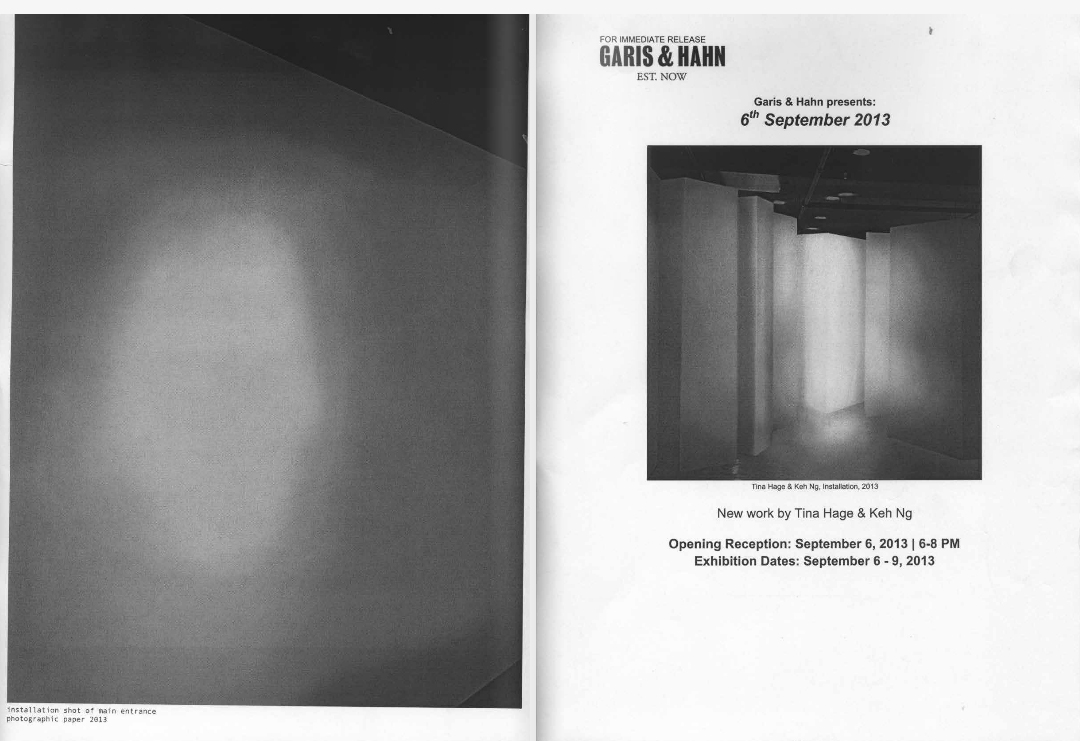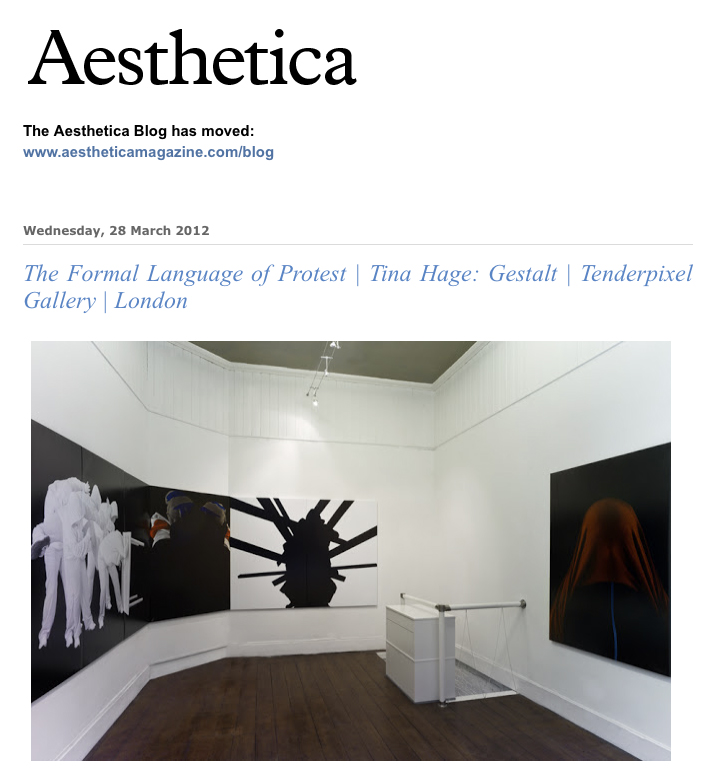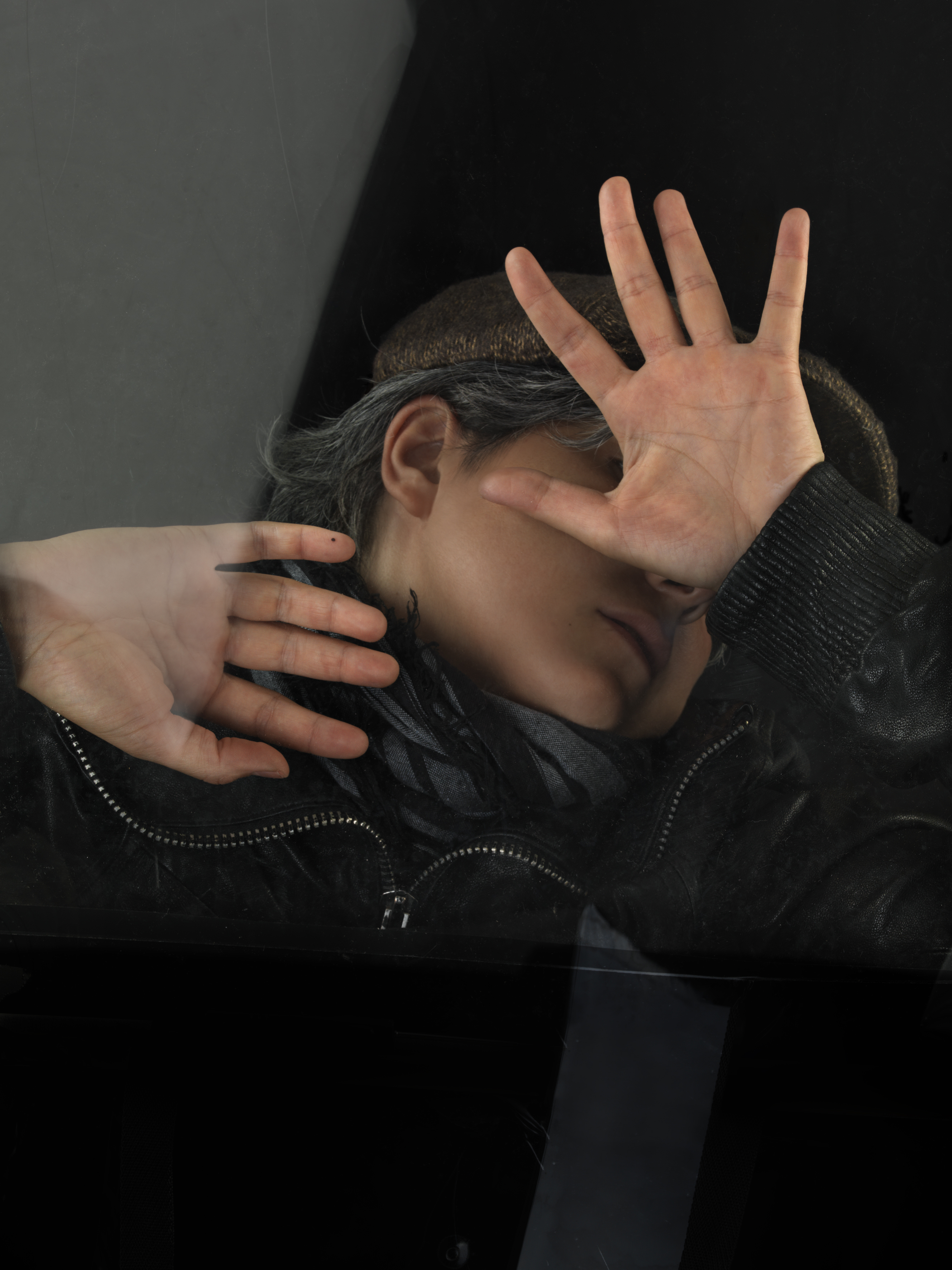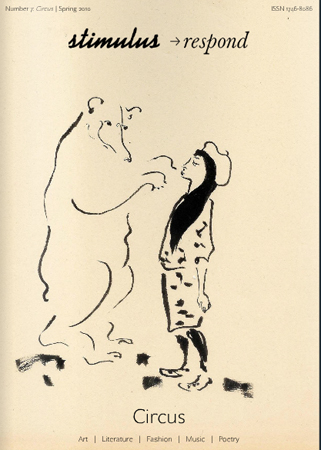German
Newspaper article in the FAZ (2025)
Group show “The Conversations” at H8H.space, Frankfurt May 2025
>> Link to installation shots of work in group show “The Conversations”
Translation
Blind Dates and Dialogues – “The Conversations” at H8H.space, Frankfurt
At least the artists were asked. After all, it doesn’t hurt to know what you're getting into when a small curatorial team invites you to a blind date. With artists, some from London, some from Frankfurt, who mostly only knew of each other by reputation before the exhibition titled “The Conversations.” It’s a rather appealing experimental setup, one might say — and perhaps not even the curators Jochem Hendricks, Keh Ng, Tina Hage, and Matthew Stock knew whether and what the pairings brought together in the H8H.space would have to say to one another.
And yet, even though Hendricks’ conceptual sound piece here and Demi Spriggs’ Exercise in Folklore there are connected by little more than their analog medium; even though it’s hard to reconcile Jagoda Bednarsky’s painting with Keh Ng’s Beast of Hackney Marshes; and even though Warren Garland initially appreciated Dirk Krecker’s collages primarily as a backdrop for his own video work — the concept largely works.
This is less a matter of form or preferences and more a result of the respective artistic attitudes, as is evident, for instance, in Karl England’s Variable and Thuy Tien Nguyen’s Platform. It also stems from the audacity with which, for example, Blue Curry sarcastically questions the identity discourse in art — paying homage in doing so to the bravado of one-time enfant terrible Georg Herold.
The initiated dialogues prove especially stimulating in their juxtaposition of younger and more established positions. More than five decades separate the minimalist “reliefs” of Charlotte Posenenske and the photography-based work of Tina Hage, born in 1976. And in the realm of art, that’s more than just half a lifetime — it’s a world apart.
Here, however, the artistic positions truly have something to say to each other. They are not simply talking past one another.
— Christoph Schütte
“The Conversations” at H8H.space, Frankfurt, Hohenstaufenstraße 8. On view until May 16.
Interview on Tique (2024)
Tique is a publication on contemporary art that exists both in print and online. Link.
German
Artikel (Auszug) von Antje Merke (2022)
Schwäbische Zeitung
Der gesamte Artikel ist hier zu lesen.
German
Artikel von Magrit Haas (2022)
Südwest Presse
German
Artikel im Filstalexpress (2022)

Fotos from guided tours with pupils at the show Universal Pattern at Kunsthalle Göppingen (2022)
Fotos by Dr. Melanie Ardjah
German
Artikel von Damian Zimmermann (2021)
Kölner Stadt-Anzeiger
Der Artikel als PDF hier.
Article by Uma Karavadra (2020)
On Contemporary Art Society / Artist to Watch
Conceived initially as a part of the London based collaborative event by the Mews Project Space 'Artists books Weekend' “What is an Art Book?” is an investigation in to the politics of artists books, its mode of production and its recent resurgence in the art world. For this our third volume The Modern Language Experiment is very excited to be collaborating with two New York spaces. Garis & Hahn and Young & Starving. An Art Book today can be seen to occupy various different positions including that of a piece of theory, a catalogue, a printed exhibition, a piece of art in itself, a supplement to a pre-existing piece. It can be a proposal for the future or an examination of the present or what has passed. “What is an Art Book?” will be an investigation of what an Art Book is in terms of material, conceptual, industrial and political concerns. For more information visit The Modern Language Experiment web site.
![]()

HESA imprint / Issue 20 (2012)
ArticleThe series Red Carpet was published in the magazine HESA imprint in September 2012.
Twentieth issue of art magazine HESA imprint, "Koodi - Code" including work by Tina Hage, Alban Low, Daniel Bourke, Pascal Brateau, Vanessa Chong, Jon Gourley, Tracy Piper-Wright, Caroline Underwood. To see the whole magazine please click here.

Aesthetica magazine (2012)
Interview BR: Tell me about Gestalt. What are the bare bones of the project and where did it begin?
BR: Tell me about Gestalt. What are the bare bones of the project and where did it begin?TH: My work starts with found images particularly those from newspapers and online media. I often look at journalistic images and have amassed a large collection of these, so I have become very aware of the various uprisings in different countries that have sprung up since the end of 2010.
What interests me is that all the protesters from these diverse places appear to be people on the street as opposed to seasoned activists and are self-organised. However, the actions of the UK rioters cannot been seen in the same context as the protesters in Egypt for example.
There is clearly an unplanned movement of masses in a swarm like mentality which uses social media and networking to communicate. The result of this is an almost spontaneous physical presence on the street. The protesters are mostly anonymous; there is no confirmed leader and most of the time the faces we see in the media are completely covered.
It is important to mention that this work is not about the subject of protest, but rather the formal language that these protesters start to create. Until recently, protests were usually pre-organised with defined leaders and political agendas. The language emerging from these new protests represent a different way in which masses now form. It is one of anonymity and viral chaos.
BR: What can we expect to see from the new work and what reaction do you anticipate from audiences to the show?
TH: When you step into the gallery space, you are physically standing inside the work. The photographic installation is made of large format prints on panels, set up very closely next to each other. The other element of the show is a book, containing images in the exhibition and additional works from the series. It creates rhythm, movement and patterns by juxtaposing the images next to each other in the page layout. Both elements are important to the show because they broaden the context of the work. The show and the book are not a political statement about protesting, I am more interested in looking closely at the anonymous individual and how they emerge as part of a movement; their gestures, appearance and actions. I would like the audience to discover a visual language that lets in their own association towards the work. I did not want to produce work which can be put into a distinct category, I always feel that restricts ways of thinking and new associations. I am fascinated by these current movements across the globe and I would like to contribute to see the individual in other aspect besides the greater political movement they are part of.
To read the full interview please click here
It is important to mention that this work is not about the subject of protest, but rather the formal language that these protesters start to create. Until recently, protests were usually pre-organised with defined leaders and political agendas. The language emerging from these new protests represent a different way in which masses now form. It is one of anonymity and viral chaos.
BR: What can we expect to see from the new work and what reaction do you anticipate from audiences to the show?
TH: When you step into the gallery space, you are physically standing inside the work. The photographic installation is made of large format prints on panels, set up very closely next to each other. The other element of the show is a book, containing images in the exhibition and additional works from the series. It creates rhythm, movement and patterns by juxtaposing the images next to each other in the page layout. Both elements are important to the show because they broaden the context of the work. The show and the book are not a political statement about protesting, I am more interested in looking closely at the anonymous individual and how they emerge as part of a movement; their gestures, appearance and actions. I would like the audience to discover a visual language that lets in their own association towards the work. I did not want to produce work which can be put into a distinct category, I always feel that restricts ways of thinking and new associations. I am fascinated by these current movements across the globe and I would like to contribute to see the individual in other aspect besides the greater political movement they are part of.
To read the full interview please click here
What is an Art Book? Volume 1 (2012)
Publication produced byThe Modern Language Experiment

What is an Artbook?
Published on Jun 20, 2012An Art Book today can be seen to occupy various different positions including that of a piece of theory, a catalogue, a printed exhibition, a piece of art in itself, a supplement to a pre-existing piece. It can be a proposal for the future or an examination of the present or what has passed.
“What is an Art Book?” will be an investigation of what an Art Book is in terms of material and conceptual concerns. It is a collaborative project that will be produced during the Artist Books Weekend at the Mews Project Space.


Artists, writers, curators, designers and other practitioners are invited to respond to the title of the project by contributing their interpretation of what an Art book means to them and their practice. Each contributor can propose text, drawings, photographs, sculpture, performance, audio recordings, video or any other concept/theory as long as it can ultimately be realised in A4 paper format and in black and white.
Tina Hage // Gestalt (2012)
PublicationThe publication contains artworks of the series 'Gestalt' and a text by Keh Ng (The modern language experiment). It was produced in context of Tina's solo show at Tenderpixel Gallery in February 2012.
It is currently available at blurb.


There will be others (2012)
Publication made for the group show 'There will be others' at Angus Hughes GalleryThe publication was produced by The Modern Language Experiment. The booklet contains works by the participating artists and writing by Paul O'Kane and Duncan Wooldridge.


Arbeit/Labour (2010/11)
Press articles for the show Arbeit/Labour at the Fotomuseum Winterthur (2010/11) Press articles Tina Hage's work is mentioned in (all in German):
Press articles Tina Hage's work is mentioned in (all in German):> Kultur Online: click here for online article / pdf format
> P.S. Zuerich: click here for pdf format
> Money Cab: click here for pdf format
Catlin Guide (2010)
Publication
The Catlin Guide is an elegant, limited edition collection of artist profiles, introducing the 40 most promising new graduate artists in the UK. Printed annually, each edition exhibits the artists’ latest work and details future exhibitions, projects and aspirations for the coming year.
Artists featured in the inaugural edition of The Catlin Guide, published in 2010, were recommended by a wide survey of BA and MA course leaders, independent curators, gallerists and collectors, moving it towards its current reputation as an accurate and exciting overview of new British art.
Artists featured in the inaugural edition of The Catlin Guide, published in 2010, were recommended by a wide survey of BA and MA course leaders, independent curators, gallerists and collectors, moving it towards its current reputation as an accurate and exciting overview of new British art.
Stimulus Respond Magazine (2010)
Issue Circus
The article consist of Tina Hage's current work and a text by curator Rahila Haque
> Click here for full view of magazine

Flexible Aura (2009)
Exhibition catalogue & curatorial project Seoul/London
The publication was part of the group show Flexible Aura held at Brain Factory project space in Seoul, South Korea. The catalogue and exhibition were curated by Byeon Hyun-joo and Christine Takengny.
> Click here for pdf format of publication
> Korean Times: click here for online review of the show
> Click here for pdf format of publication
> Korean Times: click here for online review of the show
The Guardian (2009)
The next generation of YBAs: What does the future hold?
Newspaper article
> The Guardian: click here for the online article
(pdf format of printed newspaper article)

KIC -NordArt (2009)
Press article

Tina Hage's work was part of the exhibition NordArt which is held at Kunstwerk Carlshütte in Büdelsdorf, North Germany.
Since 1999 the NordArt has established itself as one of the largest exhibitions of contemporary art in Europe which takes place anually in the summer months. The NordArt is an overall work of art in its own right and is designed as such each year. More than 200 international artists, selected by a jury, present a comprehensive panorama of contemporary art.
Since 1999 the NordArt has established itself as one of the largest exhibitions of contemporary art in Europe which takes place anually in the summer months. The NordArt is an overall work of art in its own right and is designed as such each year. More than 200 international artists, selected by a jury, present a comprehensive panorama of contemporary art.

